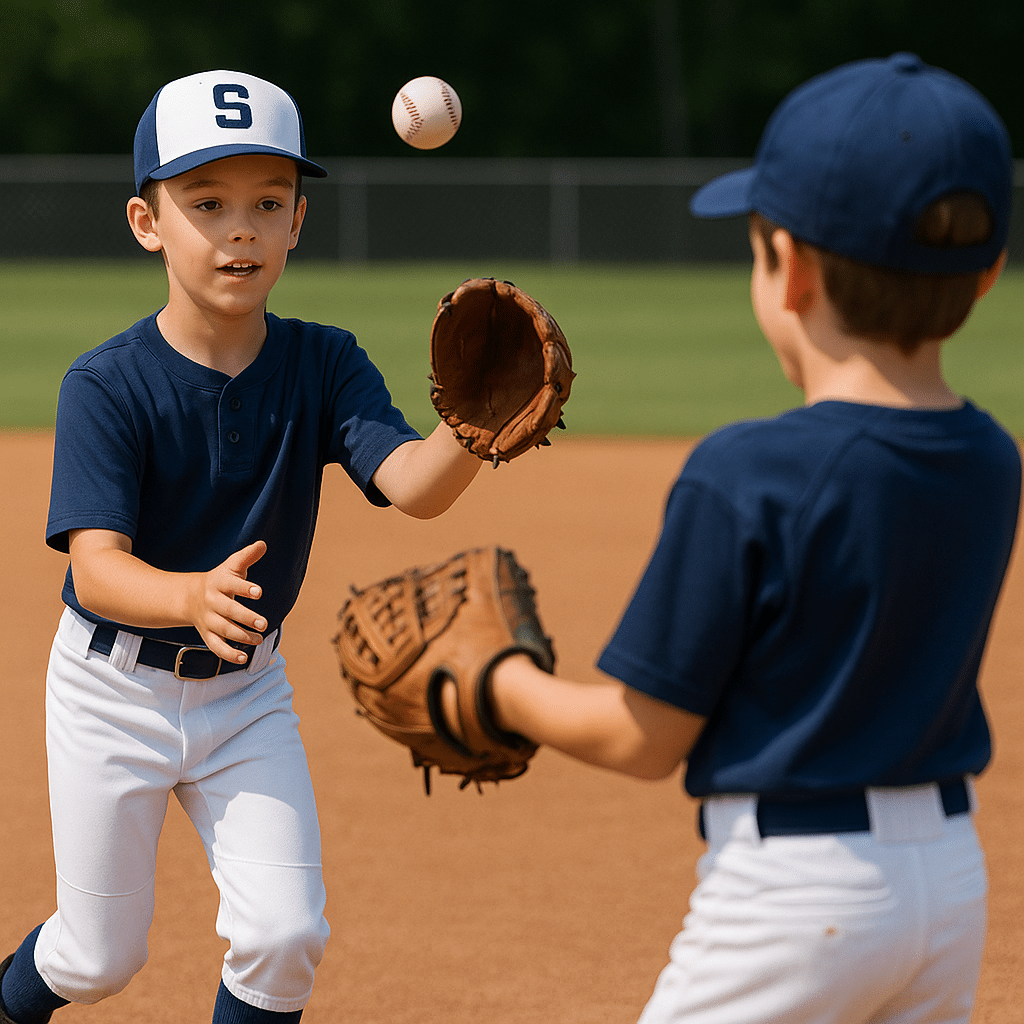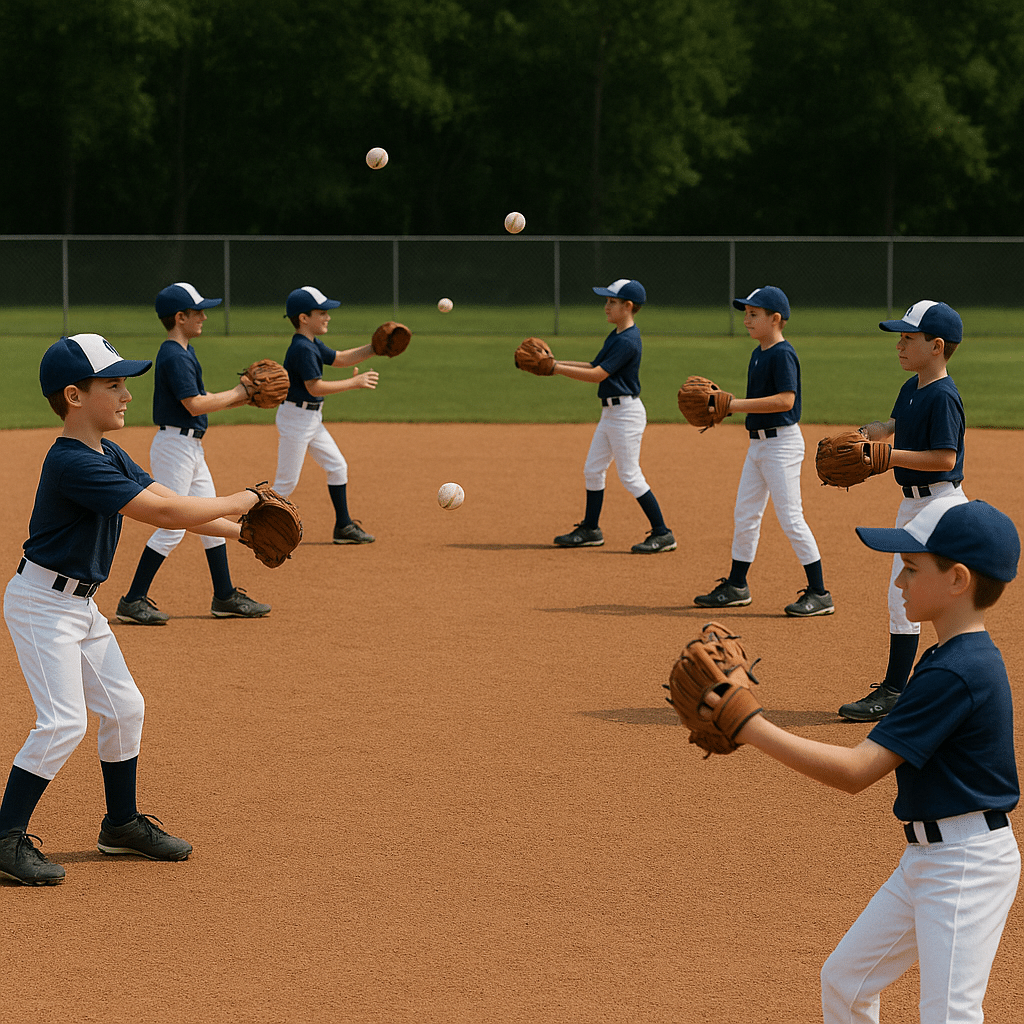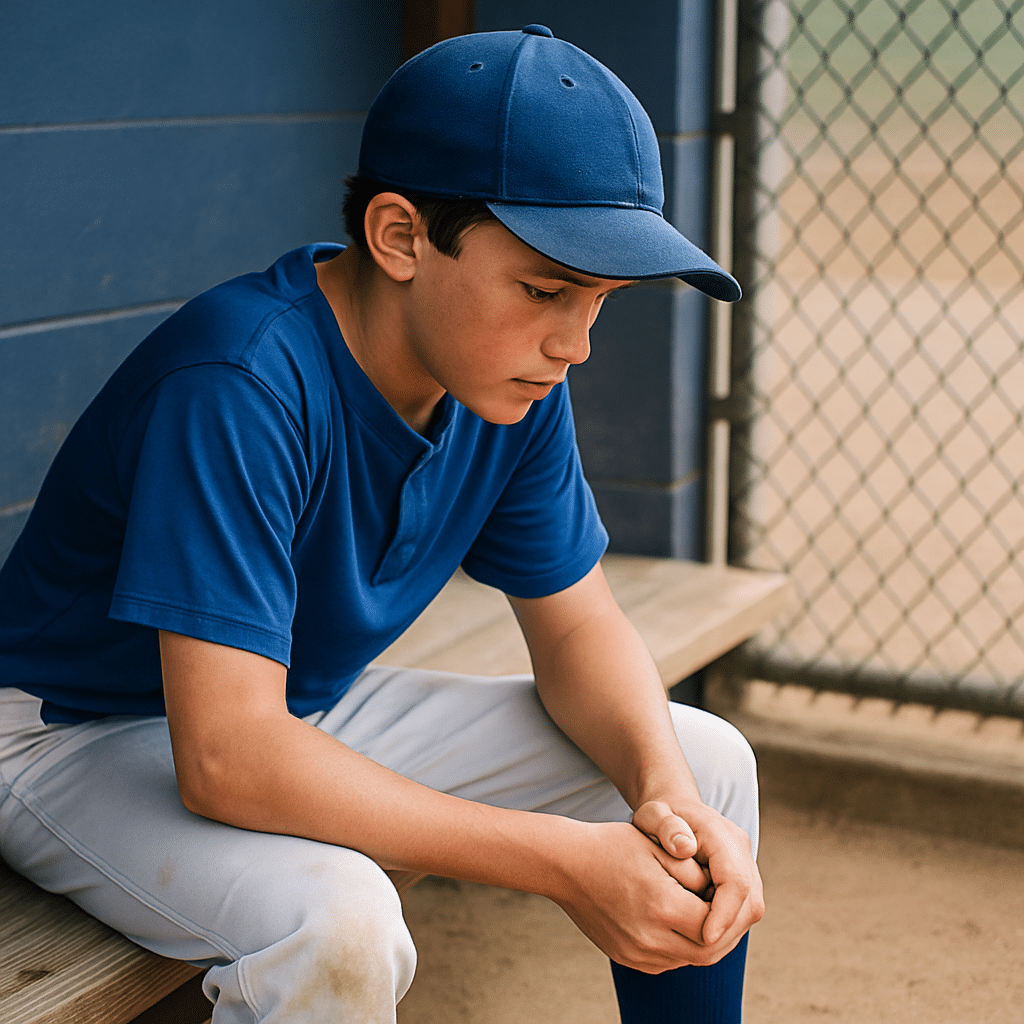Why Warm-Up Matters More Than You Think (And How to Do It Right)
I think back to my Little League days, and honestly? Warming up didn’t get much attention.
A couple of quick tosses, maybe a stretch or two—and then I was already pulling on my catcher’s gear, game on.
These days, not much has changed. As parents cheer and coaches hustle to get kids organized, warm-ups often get rushed or skipped entirely.
But here’s the truth: a good warm-up isn’t just a box to check.
It protects young bodies, sharpens focus, and sets the tone for how a player performs once the first pitch is thrown.
Translation; Warm-ups matter more than you think.
So how do you help your kid warm up the right way?
Let’s break it down. Here are 5 simple tips to keep your Little Leaguer safe, sharp, and ready to shine.
🔬 Why Warm-Ups Actually Work (The Science Behind It)
Warming up isn’t just tradition—it’s biology in motion.
- It raises core temperature, making muscles more elastic and less prone to strain or pull.
- It boosts blood flow, delivering oxygen and nutrients to muscles just when they need it most.
- It primes the nervous system for sharper reactions and better coordination.
- It activates joints and connective tissue, helping players move more freely and safely.
Even a short, well-designed warm-up can give players a serious edge—from first pitch to final out.

🧢 5 Warm-Up Tips That Actually Work
1. Start with Dynamic, Not Static
Skip the toe-touch-and-hold routine.
Young muscles respond better to dynamic warm-ups—think movement over stillness.
✅ For players: Jog around the bases, high knees, butt kicks, arm circles, and lateral shuffles for 5–7 minutes.
👨👩👧👦 For coaches/parents: Make it a game. Try mini-relays or mirror drills to keep kids moving and engaged.

2. 🧢 Activate the Throwing Arm—Gently
Overhand throwing is a full-body motion.
Jumping into hard throws too quickly can strain young shoulders and elbows.
✅ For players: Do shoulder circles, forearm flicks, and 10 slow “air throws” before grabbing a baseball.
👨👩👧👦 For coaches: Use resistance bands or towel drills to engage rotator cuff and support muscles—especially helpful for pitchers.

3. Include Reaction & Focus Drills
Warming up isn’t just physical—it’s mental.
Sharpening focus early helps players make faster, smarter decisions once the game starts.
✅ Drill idea: “Quick Toss Reaction” — Stand 5 feet away and toss the ball from different angles.
Players catch as fast as they can.

4. Make Warm-Up a Routine (Not a Chore)
Habits build consistency.
When players know what to expect, they’re more likely to take warm-ups seriously.
✅ For players: Create a go-to warm-up checklist.
👨👩👧👦 For parents: Celebrate routine.
Turn warm-ups into small challenges (“Beat your ladder drill time today!”).

5. Reset with Breathing and Visualization
Mental prep matters just as much as movement.
A clear head and calm breath lead to better performance—especially in pressure moments.
✅ For players: Take 30 seconds to close your eyes, take three deep breaths, and picture a smooth swing or clean fielding play.
👨👩👧👦 For coaches: Use a cue like, “Breathe and believe,” before drills or innings.
🧠 Pro Tip: Sports psychologists say visualization enhances focus, reduces anxiety, and boosts performance.

✅ Quick-Start Warm-Up Template
Here’s a printable, shareable warm-up plan any coach or parent can use:
10–15 Minute Routine:
- 3 min: Light jog, skipping, side shuffles
- 3 min: Arm circles, walking lunges, high knees
- 3 min: Sport-specific (throws, glove taps, ladder drill)
- 2 min: Reaction drill (mirror toss, drop-and-catch)
• • 1 min: Breathing and visualization
Frequently Asked Questions
How long should a youth warm-up take?
10–15 minutes is enough. Keep it focused on movement, throwing prep, and mindset.
Is warm-up really that important for younger kids?
Yes! Their muscles are still developing—and consistent warm-ups help build long-term habits and reduce injury risk.
Can warm-ups improve actual performance?
Absolutely. Loosened muscles react faster, and focused minds make better decisions.
What should I do if my athlete complains of pain during warm-ups?
Stop immediately. Pain (not soreness) is a red flag. Don’t push through—assess or consult a medical pro.
What’s the difference between warming up and stretching?
Warming up gets the blood flowing and prepares your body for movement (think jogging or arm circles). Stretching, especially static stretches like toe touches, is better saved for after practice to improve flexibility and reduce soreness.
My kid says warm-ups are boring—how do we make it fun?
Turn it into a challenge or a mini-game! Use obstacle courses, timed drills, or “mirror” routines where kids copy each other. Let players lead the warm-up sometimes—it builds engagement and ownership.
Can skipping warm-ups really lead to injuries?
Yes—especially over time. Cold muscles are more prone to strains, and rushed throwing can stress young shoulders and elbows. Think of warm-ups as insurance for your kid’s body—cheap, effective, and way easier than rehabbing an injury.
🧢 The Role of Coaches and Parents
Great warm-ups start with great examples.
👨🏫 Coaches:
Lead with energy. Explain why warm-ups matter and how they connect to better performance.
👪 Parents:
Reinforce habits at home. Show your player you value warm-ups—and they will too.
🎲 How to Make Warm-Ups Fun
Let’s face it—if it’s not fun, it won’t stick. Try:
- Red light, green light to teach body control and quick stops.
- Rotating leaders so kids take turns leading the routine.
- Music or theme days (zombie shuffle, superhero skips, etc.) to keep it fresh.
📈 Adapting Warm-Ups as Kids Grow
Not every player needs the same warm-up. Here’s how to scale:
- Ages 5–8: Keep it short, play-based, and fun.
- Ages 9–12: Add structured drills, focus cues, and throwing progressions.
- Teens: Include mobility work, injury-prevention drills, and sport-specific prep.
Always adapt for weather, injury history, or fatigue. Flexibility is part of the process.
💥 Final Takeaway
Every great game starts before the first pitch. Warm-ups aren’t optional—they’re foundational.
They protect, prepare, and prime young athletes for success.
Train smart. Show up ready. And let the warm-up do its job.
📩 Want More Smart Baseball Tips?
Subscribe to High N Tight—the weekly baseball newsletter for parents, coaches, and players who want to stay sharp, laugh a little, and get ahead of the game.
👉 johnboxley.beehiiv.com
